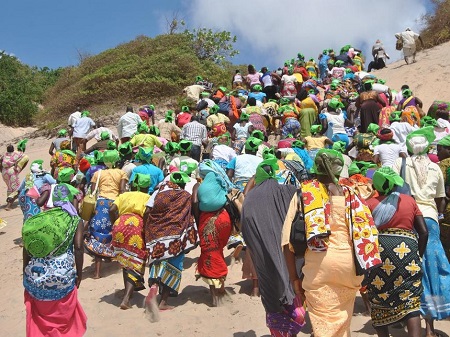Measuring Impacts on Kenyan Women

Since HLRN began systematically monitoring and mapping housing and land rights violations through its Violation Database in 2006, HLRN has observed many patterns. The data collected has formed the basis of HLRN reports issued on the occasion of Habitat Day.
One of the challenges to effective reporting on violations—whether forced eviction, dispossession, destruction or the negative impacts of privatization—is providing detail about the victims, their number and their consequences. Most lacking across all regions is a reliable quantification of the costs, losses and damages incurred by victims.
In 2018, HLRN has begun implementing its Women’s Land and Home project which is dedicated to filling this yawning gap in the record. The new project is dedicated to assessing the impacts of dispossession, eviction, gender-based discrimination and other violations of women’s housing and land rights in three countries.
HLRN is now genderizing its Loss Matrix/Eviction Impact Assessment (EvIA) methodology to address strategic priorities determined by housing and land rights and women’s rights. The first country of implementation is Kenya, through a cooperative arrangement with two local HIC Members: Mazingira Institute and Pamoja Trust.
On 23–25 July 2018, the project delivered a training workshop on “Women, Land and Homes: Assessment of impacts of dispossession” at Nairobi’s Desmond Tutu Conference Centre. The first day of training, introduced by Davinder Lamba and Sam Ikau (Mazingira Institute) introduced the gender equality approach to human rights, particularly, housing and land-related rights, with an overview of the human rights legislative framework and protection mechanisms at the International, regional and national spheres. The day introduced the theory and practice of the human rights concept of effective remedy, including the important distinction between compensation and the fuller entitlement of reparations for gross violations [AR] such as forced eviction.
Steve Ouma Akoth (Pamoja Trust) contextualized the question of land and housing in Kenya, which Diana Lee-Smith (Mazingira Institute) complemented by focusing on gender equality and women’s rights approach to housing and land rights.She recapped historical research that revealed the often-unspoken “gender compact” across societies, manifesting in material discrimination.
HLRN officers Joseph Schechla and Ahmed Mansour presented the relevant human rights norms and mechanisms at the international and African regional levels.
Jill Cotrell Ghai (Katiba Institute) elucidated Kenya’s domestic human rights legislative framework and protection mechanisms concerned with gender equality, women, non-discrimination and economic, social and cultural rights, particularly rights concerning housing, land and property. Emily Kinama, also of Katiba Institute, discussed the relevant Kenyan case law and jurisprudence on such violations affecting women.
Pursuing a course of learning that proceeded from general to specific, theoretical to practical Joseph Schechla focused on the entitlements of reparation in cases of gross housing and land rights violations, and Steve Ouma Akoth applicable accessible and human rights-based formal courts and everyday justice mechanisms remedies to violations of women’s land and property rights
The Tool
The following sessions of the workshop were dedicated to the methods and available tools developed in HLRN for assessing the impacts of housing and land rights violations. Following a short inventory of diverse experiences and contexts in which the Loss Matrix/EviA tool has been applied in several countries, resulting in a typology of cases involving violations of housing and land rights. It illustrated the tool’s applications to quantify the impacts (losses, costs and damage) incurred by women and men, and demonstrate the need to develop the method further to capture the values as stake for women and girls in cases of violation or risk of violation of rights to adequate housing, land-related rights and rights to property.
The third day of the workshop involved the 34 participants from 21 organization developing a typology of cases in the Kenya context. The 19 women and 20 men determined the following some 20 distinct contexts in which women’s housing and land rights often take place:
- Conflict (civil war)
-
Conflict (community, intercommunity)
-
Conflict (family)
-
Development (land concession)
-
Development project
-
Disaster (flood, drought, etc.)
-
Early marriage (due to land scarcity)
-
Election/post-election violence
-
Gentrification
-
Infrastructure project
-
Inheritance:
-
Generational
-
Widowhood
-
Land grab
-
Marital property (e.g., divorce)
-
Mega-events
-
Military operations
-
Privatization
-
Punitive actions
-
Titling schemes (omitting women’s tenure)
-
Transitional justice
-
Combinations of the above
The workshop concluded with a plan for following-up the findings to select on five priority cases that reflect the pattern of housing and land rights violations of Kenyan women. Of these, the partners will select one strategic case for a detailed application of the quantification methods toward remedy for the victims.
Future outcomes of the Women’s Land and Home will be featured in future issues of Land Times/أحوال الأرض.
Photo: Some of the women who took part in a demonstration to protect their land rights at Mamburui in Magarini Sub-County, Kilifi, 7 October 2016. Source: Alphonce Gari.
|